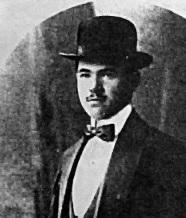
1893 - 1926
Gusztáv Léderer
Summary
Name:
Years Active:
1919 - 1925Birth:
July 20, 1893Status:
DeceasedClass:
Serial KillerVictims:
9+Method:
Stabbing / ShootingDeath:
November 12, 1926Nationality:
Hungary
1893 - 1926
Gusztáv Léderer
Summary: Serial Killer
Name:
Gusztáv LédererStatus:
DeceasedVictims:
9+Method:
Stabbing / ShootingNationality:
HungaryBirth:
July 20, 1893Death:
November 12, 1926Years Active:
1919 - 1925bio
Gusztáv Léderer was born on July 20, 1893, in Pozsony, which is now known as Bratislava in Slovakia. He was part of a small Lutheran family. His father, János, was a military officer, and his mother, Zsuzsanna (née Preisinger), took care of the household. From a young age, Léderer had plans to become a bank clerk. However, when World War I began, he decided to enlist in the army.
After serving for a year, Léderer met Mária Schwartz, a young cashier from Styria. Mária was known for her beauty and attracted attention from many young men. Léderer did not seem to mind the competition. For the next few years, he worked as a food officer, which meant he supplied rations to soldiers rather than serve directly on the battlefield. After Austria-Hungary lost the war, he returned to Bratislava and married Mária.
In the aftermath of the war, Gusztáv and his brother Sándor fled to the countryside when the Czechs occupied Bratislava. They initially wanted to join the Hungarian Red Army but changed their plans and went to Szeged. There, Léderer joined an officer corps and continued to work as a food officer. Over time, he gained a reputation as a controversial figure among his peers. Many people believed he was involved in political assassinations.
After the right-wing government took control, Léderer was able to join the gendarmerie and eventually moved to Budapest. He bought a large apartment on Soroksári Street, where he and Mária lived together. However, their lifestyle became difficult to maintain on his modest salary, leading them into financial troubles.
murder story
Gusztáv Léderer, along with his wife Mária, became involved in a serious crime in Budapest. They targeted Ferenc Kodelka, a wealthy butcher, for his money. Their first attempt to harm him occurred in November 1924. They assaulted him, but Kodelka managed to survive the attack. Léderer claimed that injuries were due to an accident with broken glass.
Their second attempt in January 1925 was successful. They pretended to have a business deal with Kodelka, and during this interaction, they stole a large sum of money from him. Later, Léderer shot Kodelka while he was asleep in their apartment. After the murder, they cleaned the scene and Léderer dismembered Kodelka's body, putting the parts into suitcases.
The couple tried to dispose of the remains in the Danube River but were caught by a watchman who recognized them. This watchman informed the police, leading to a search of their apartment. Although Léderer was not present at the time, police found parts of Kodelka's body hidden in the attic. When Mária returned, she confessed to the crime, and soon after, the police arrested Léderer as well.
The murder led to a public outcry. The government ordered a thorough investigation into Léderer's activities. Evidence suggested he might have been involved in other crimes, particularly a case known as the "Wine Murder," but these leads went cold as military prosecutors did not transfer his case to civilian authorities.
In May 1925, Léderer was found guilty of murder, robbery, and fraud. He was sentenced to death by hanging, while Mária received a life sentence. Léderer chose not to appeal the ruling and instead requested a different method of execution, which was not granted. He was executed on November 12, 1926, in a military prison.
Mária served 15 years in prison before being released on parole. There were speculations about Léderer's involvement in other crimes, including the disappearance of a furniture factory manager and an elderly man, but these cases were never proven.